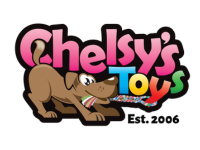Keeping Pets Safe When Spring Cleaning

As many of us know, cleaning supplies can be toxic, especially for pets. Here are some safety precautions you can take to keep your fur babies out of harms way!
When Choosing Cleaning Products:
Read the labels carefully to check the ingredients. Be conscious of the strength of the product, such as alcohol or bleach, to know how much you should dilute it. Using more than recommended is not better. The higher the accidental dose a pet gets, the more toxic.
Hazardous products are bleach/bleach based products, laundry detergent pods and phenol-based disinfectant and more. Bleach is a strong alkali, meaning it can erode paw pads if a pet walks through it, or can damage mouths and throats if ingested. Yikes! Phenol-based disinfectants are toxic to both dogs and cats. Cats are so sensitive to phenols that even small amounts absorbed through the skin can be deadly.
Toxic Ingredients:
- Chlorine
- Ammonia
- Isopropyl (rubbing) alcohol
- Formaldehyde
- Phenols
- Benzalkonium Chloride (BAC): toxic to cats
- Phthalates
- Perchloroethylene (PERC)
- Triclosan
- Butoxyethanol
- Sodium Hydroxide
Minimizing the Risk:
When you are done with liquid cleaners, rinse out buckets and mops. When you are done with wipes, throw them out right away. Make sure your household garbage bags and cans have lids secured at all times. Shut and secure the doors of cabinets or closets or rooms where you store cleaning products, supplies/equipment and medications.
If you suspect your pet has been poisoned (symptoms may include vomiting, diarrhea, lethargy and seizures), seek veterinary medical help right away. Call a local emergency vet for advice and to find out whether they should see your pet. If they are not immediately available for advice, call the ASPCA Animal Poison Control Center at (888) 426-4435.

